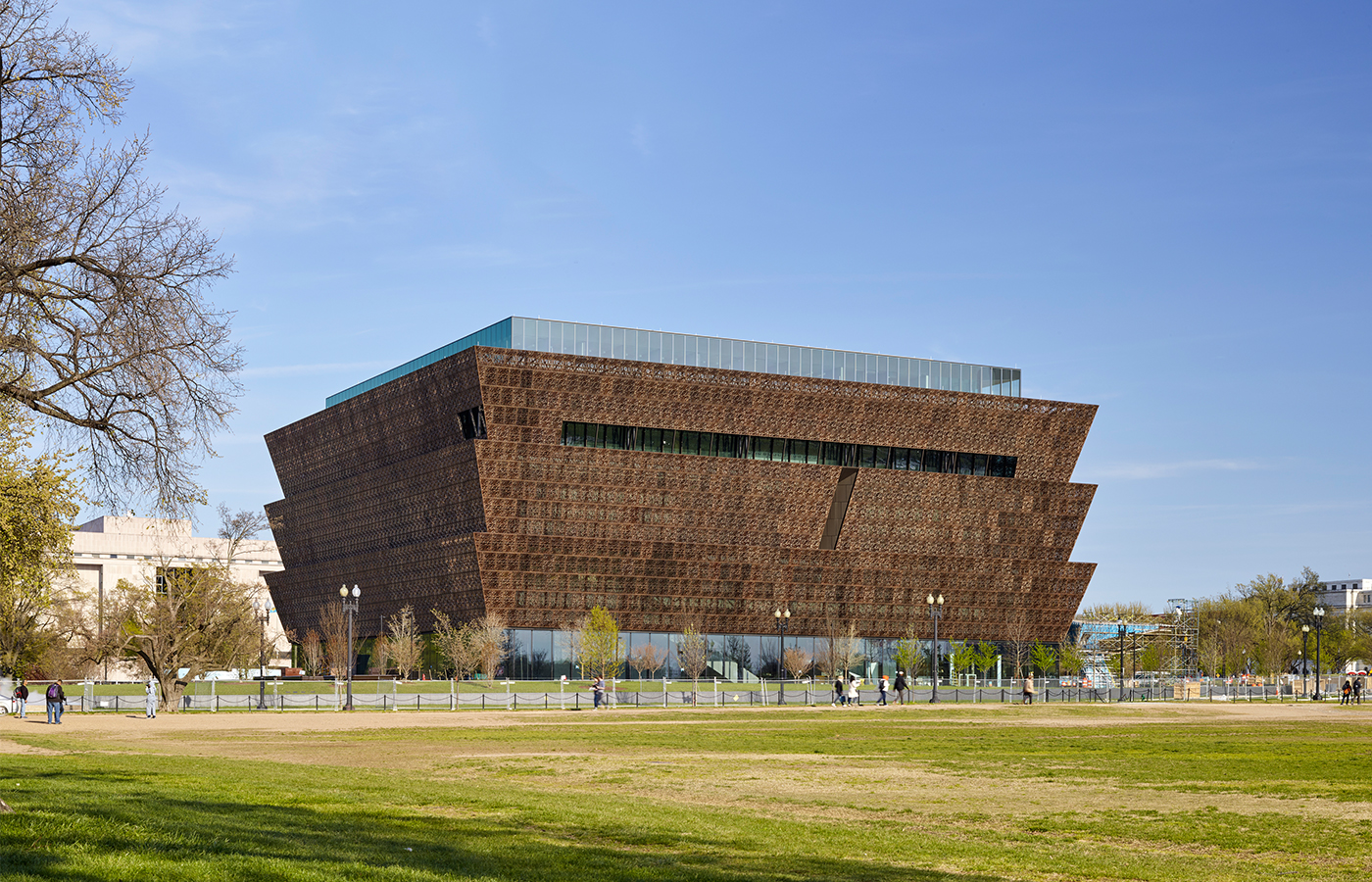Global architecture and design firm Perkins&Will celebrates today the grand opening of the National Museum of African American History and Culture (NMAAHC). The museum, designed by the collaboration known as Freelon Adjaye Bond / SmithGroup JJRfor which Perkins&Will’s Phil Freelon served as lead architecthonors the significant social, economic, and cultural contributions that African Americans have made to this country over the last several centuries.
As an African American, and as the lead architect on this project, to know that this vision has become a reality on the National Mall, right in the heart of our nations capital and within steps of the Washington Monument, is to realize a magnificent accomplishment, says Freelon, managing and design director for Perkins&Wills North Carolina practice. Its difficult to find the right words to express my pridenot just in our contributions to the design of this museum, but also in all that the museum represents, and in all that the museum strives to do.
WATCH: Phil Freelon shares his personal history growing up and becoming a leading architect.
Freelon has been actively involved in the creation of the museum since 2006. At that time, he began collaborating with the late Max Bond, another preeminent African American architect and a principal of the firm Davis Brody Bond, on the building’s initial planning. This collaboration resulted in a 1,200-page master planning and programming document that laid the groundwork for the museum’s design that we see today. In 2008, The Freelon Group and Davis Brody Bond invited Adjaye Associates and SmithGroup/JJR to join their team for the museums international design competition. The then newly-formed Freelon Adjaye Bond / SmithGroup JJR won the competition in 2009, and the site broke ground three years later.

Over the next seven years, The Freelon Groupwhich became part of Perkins&Will in 2014was responsible for leading the entire design team and the projects 28 other consultants to ensure that the design intent and The Smithsonians vision for the museum became a reality.
Its been many long years in the making, and every moment of bringing this museum to life has been a true labor of love, says Zena Howard, senior project manager on the NMAAHC and principal at Perkins&Will, who worked full-time on the project for more than 8 years. As one woman out of the roughly 0.02 percent of female African American architects in this country, and the only black female architect on this project, I feel particularly honored to have had such an integral role in the museums creation. It means so much to me.
The Building Design
The design and construction of the nearly 400,000-square-foot museum, which includes exhibition galleries, an education center, a theater, an auditorium, a cafeteria, a store, and offices, was one of the largest and most complex building projects in the country. With 60 percent of the structure underground, designers and engineers had to create a continuous retaining wall around the perimeter of the siteextending 65 feet down at its maximum heightto secure the buildings foundation in the marshland below Washington, D.C.
The museum is also the most sustainable national museum ever built, and the greenest of all Smithsonian Institution buildings. 它具有雨水收集、屋顶安装的光伏太阳能电池板、广泛的采光和高效率的机械系统等设计元素。 它跟踪LEED黄金认证。
独特的三层建筑外墙灵感来自约鲁班木雕,一个传统的西非木制雕塑,上面有皇冠或日冕。 由此产生的向上影响的形式是其邻近结构在国家购物中心之间的对比和互补存在。 青铜色的日冕图案由3,600块铸铝板组成,总重达230吨,灵感来自南卡罗来纳州查尔斯顿华丽的铁制;佐治亚州萨凡纳;和新奥尔良,路易斯安那州,其中很多是由奴役和自由的非洲裔美国人创造的。 日冕的视觉冲击在一天甚至一年中都发生变化,有时显得安静和阴郁,但暴露在阳光下时却明亮而充满活力。
大楼主入口设有一个带反射池的宽阔前廊,欢迎所有从国家购物中心接近它的人。 游客在进入最低层的历史画廊之前,先通过文物馆。 通过坡道上升通过展览突出奴隶制和自由,故事在1968年和超越展览达到高潮。 沉思的法院,一个圆柱形的瀑布,加上日光从上面的眼罩照耀下来,为反思和纪念定下了基调。
位于沉思法院对面的奥普拉·温弗瑞剧院可容纳350人。 这个场地是表演者、艺术家、教育家、学者、作家、音乐家、电影制作人和舆论领袖的论坛,展示非裔美国人的历史和文化如何塑造和丰富国家和世界。
展品集中在文化和社区、音乐和视觉艺术的楼层以上。
弗里隆说,这个博物馆的设计都是有目的的,希望参观者能从不同的角度,通过非裔美国人体验的镜头来看待美国。 今天,我们正经历着各种社会弊病,我们正经历着一些非常具有挑战性的时期,我希望来到这里的人们能够以开放的心态、心胸和愿意一起找到解决办法,积极离开。
有关详细信息,请联系[email protected]。


